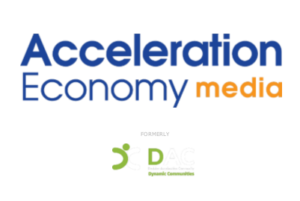How Incentives Drive Change in B2B Marketplace, Customer Behaviors
In episode 59 of the “Inside Dynamics Communities” podcast, Ryan Gonzales, Senior Sales Director of Dynamics Communities and Summit NA, and Pam Misialek, Community Director of Dynamics Communities and Summit NA, are joined by Brandon Rodríguez, VP of Corporate Marketing, Paystand, and David Gersten, Emerging Partner Ecosystems Sr. Manager, Paystand.
The group discusses how incentives drive behavioral changes in the market, and specifically, their impact on the B2B market, Paystand’s unique approach to incentivizing users through its B2B payment rail, and real-world examples of the impact of Paystand’s Bank Network on customers in the agricultural industry.
Agents & Copilots are defining the future of Dynamics, CRM, Power Platform, Azure, Fabric, and more. Register for Community Summit NA 2025, running October 19-23 in Orlando, FL, to explore and discover what this means to you.
Key Takeaways
- How incentives drive behavior in the market: Brandon emphasizes the importance of aligning incentives with desired outcomes to drive profitable behavior. Many economic issues arise from misaligned incentives, and Paystand’s approach focuses on ensuring that its business model aligns with its clients’ profitability goals. This process involves creating incentives that encourage profitable actions from customers, differentiating Paystand’s strategy from others in the marketplace.
- Incentives in the B2B market: In the B2B marketplace, a significant portion of payments are still made through checks, which are preferred by customers for their flexibility, and credit cards, which are convenient but costly due to high fees. These payment methods, while easy for customers, are not profitable for businesses due to the time and costs associated with processing and reconciling them. Service providers are incentivized to integrate into a credit card payment system to secure profitability, leading to increased credit card usage. However, Brandon explains that this results in a 3% fee on every transaction, prompting the need to rethink the business model to address these costly incentives.
- Paystand’s solution: Paystand charges a predictable SaaS fee, which is higher than some competitors, but this incentivizes users to use a free B2B payment rail, similar to Venmo for Business. This approach reduces costs for both the user and the merchant, leading to significant savings and a shift from credit card payments to the more cost-effective B2B payment rail. By aligning incentives, Paystand has achieved a 49% reduction in the cost of receiving payments over the past three years.
- Changing customer behavior through incentives: Paystand brings a unique approach, and David notes that the company is different from other competitors in the marketplace. Specifically, he emphasizes the need to offer alternative payment options to customers, highlighting that many businesses unnecessarily absorb high credit card fees. By presenting a convenience fee, for example, and encouraging the use of a bank network, businesses can significantly reduce costs and improve profitability.
- Customer use case: Concept AgriTek, a customer who previously absorbed credit card fees and accepted checks, switched to an automated solution with Business Central and Paystand’s Bank Network. This change led to a significant shift from credit card payments to the Bank Network, eliminating PCI compliance issues and surprising the customer with how smoothly the transition occurred.


